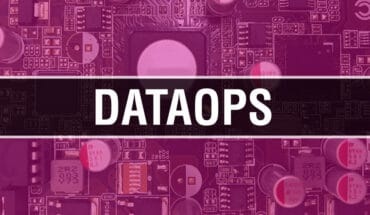
Organizations need to take a hard look at their entire data stack and determine if all of the solutions are providing functionality, efficiency and accuracy, or if there’s room for consolidation into a single, customizable system.
The modern data stack is broken. On a global level, the average organization uses 130 different software applications. With so many technologies available, data management can get complicated quickly. Building data management tools in-house can be costly and time-consuming and steer organizations away from their original mission. It’s usually easier to outsource, but as organizations have scaled, so has their data. Business leaders have suddenly found themselves with a plethora of software solutions, all addressing different aspects of data management, but not all of them are working together seamlessly.
It’s time for data management professionals to start questioning the status quo and seek a different approach to data management. Organizations today need a common data structure that can easily represent any data type and a uniform, consistent set of tools to interact with that data efficiently and accurately.
A brief history of data management
Data management has been an essential part of business since the 1960s – albeit it was a much simpler endeavor back then. The original method of data management included on-premises solutions run on mainframes with just a few major players owning the market for the next four decades: Oracle, IBM, and Microsoft.
By the start of the Millennium, data management in the cloud rose in popularity and exposed the disadvantages of on-prem data stacks, including the rising cost of maintenance, a short list of users able to access the data, and insufficient processing power. Throughout the 2000’s and 2010’s, organizations experienced a rapid uptick in diverse and increasing amounts of data sources, as well as the need for more management, analysis, and organization of the data.
Enter the modern data stack: companies today typically have several cloud-based databases and management tools to accommodate broadening datasets. Whether they need to scale, increase speed, or devote efforts to improving the quality of data-backed insights, organizations can access hundreds of solutions that tackle anything on their wishlist. Over $10 billion was spent on data-as-a-service tools in 2023 as companies sought out more solutions to add to their tech stack.
See also: The Critical Role Streaming Plays in a Data Stack
Why the modern data stack is no longer working
Now, the world is entering into a new era of data management. Large tech stacks are no longer working – it’s getting more expensive and complicated to keep adding onto the stack in an effort to increase workload efficiency and data quality.
The modern data stack is too complex with the use of multiple tools and platforms. From cataloging to governance to access control, several “new” tools that reinvent the wheel hit the market every quarter. Additionally, each new tool added to the stack increases the total cost of ownership with more licensing fees and hiring or re-training data engineers to use every new solution.
Each new addition to the stack is meant to make everything modular, but it has resulted in a disjointed system that further silos data. As a result, collaboration among data scientists, analysts, and product owners is inhibited. They often don’t work on the same platform, they have different processes across teams, handoffs lack context, and communication takes a nosedive. Today, huge organizations of data engineers and professionals are overseeing data initiatives in enterprise organizations, yet these initiatives take months, and business users and decision-makers aren’t seeing the velocity of impact or breakthrough insights that were promised.
Then, there’s the issue around security and governance. With many tools come many data transfers across teams and silos. It becomes virtually impossible to know who has access to different datasets and if they should have access to it.
The last few years have given rise to artificial intelligence (AI), machine learning (ML), and their advances in Generative AI and large-language models (LLMs), which rely upon enormously large datasets of so-called unstructured data such as text, files, and images. Unfortunately, traditional data architectures weren’t designed to handle LLMs, AI, and ML, resulting in the need to invest in specialized, multimodal data management solutions that stretch beyond simple tables and tabular databases.
Tables don’t provide the flexibility needed to properly structure non-traditional data like images and ML embeddings. However, a well-meaning but unintended consequence is that organizations then flock to bespoke solutions – one for images, another for vectors – and the list goes on. They will pat themselves on the back for narrow performance benchmarks and optimizations but lose sight that there is yet another data silo in the organization, and increased complexity is now the real blocker to insight.
Over time, more solutions are added to the stack, addressing specific problems separately, further siloing data, and requiring even more management oversight, plus additional governance and compliance enforcement. In tandem with the extraordinary cost of building and maintaining in-house infrastructure, acquiring and retaining talent is its own challenge.
It’s time for database vendors to reimagine how database systems are built and strive to build with strategic intent.
The solution: a unified data model
The solution for fixing the modern data stack is twofold: adopting a flexible, unified data model that can handle the challenges of today’s architectures and a single platform that unifies all data, compute, and code platforms in a single solution.
A viable unified data model can be architected around the multi-dimensional array, which can give organizations a single system to house all data and integrate preferred cataloging, resource provisioning, governance, etc. just one time and regardless of the use case.
Second is the need for a unified data platform. For example, to avoid rebuilding separate infrastructures for coding and storing data, organizations have an opportunity to use the same system for coding and storing, which will also reuse the same governance and compliance model. In the end, this merger will bring cost-effectiveness and increased performance because engineers won’t be bogged down with having to replicate and preprocess the same data into multiple systems.
In 2024 and beyond, organizations need to take a hard look at their entire data stack and determine if all of these solutions are providing functionality, efficiency and accuracy, or if there’s room for consolidation into a single, customizable system. However, this problem shouldn’t fall on the shoulders of the end-users, but rather on the software vendors that have the ability to create unified solutions for their customers.
For organizations looking to cut costs, increase productivity, and simplify operations: data infrastructure doesn’t have to be complicated and there are data management solutions that exist to make your lives easier today.




























